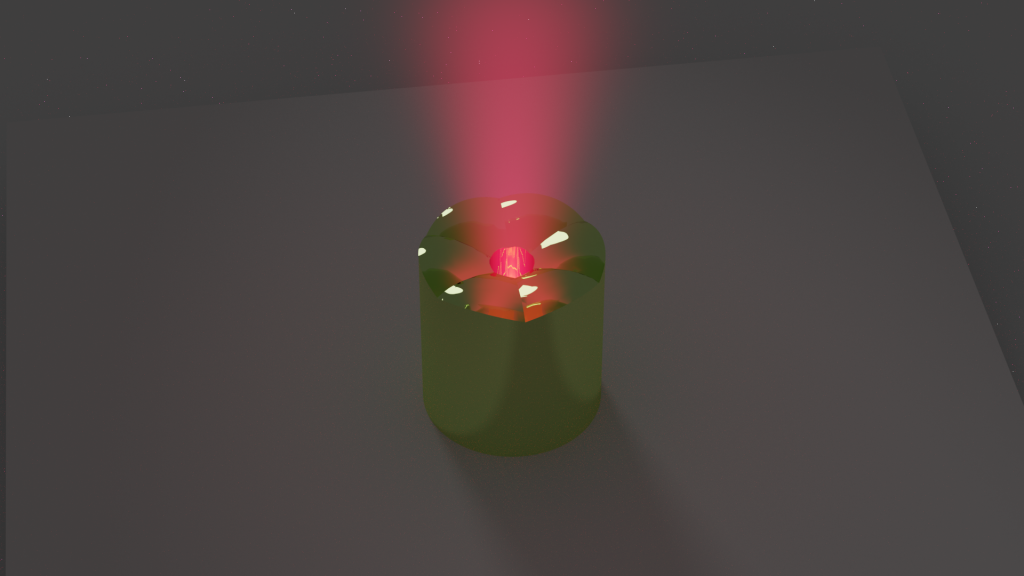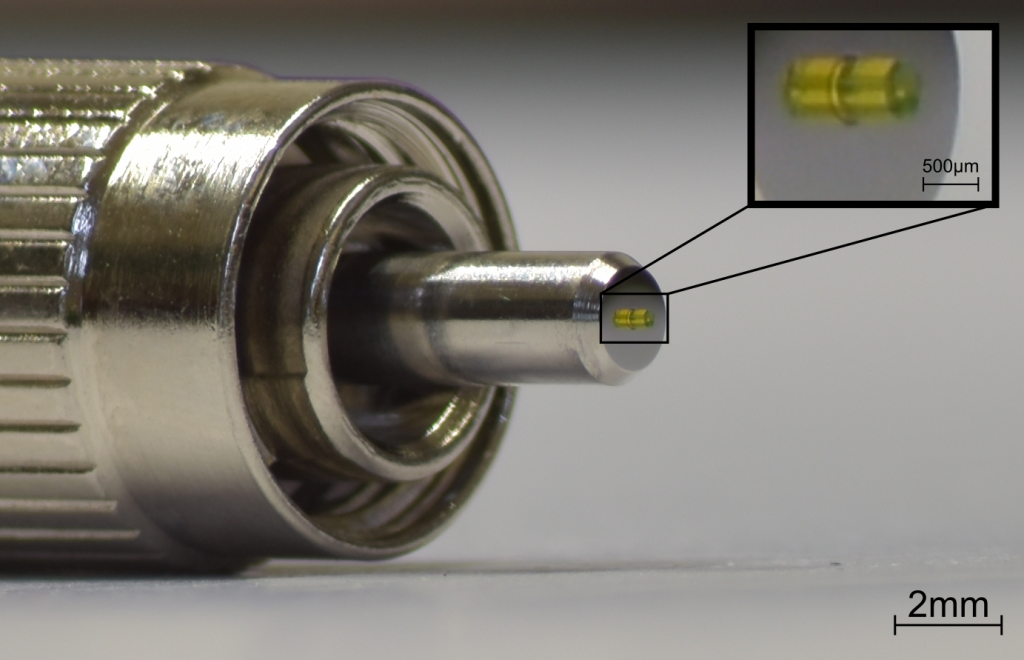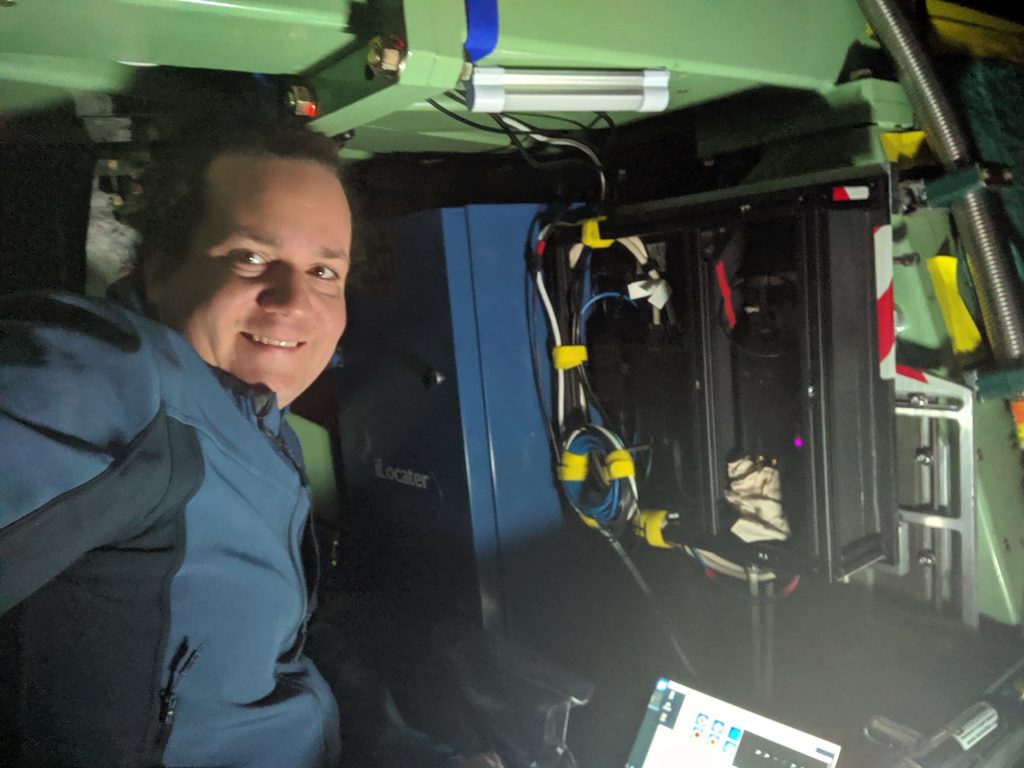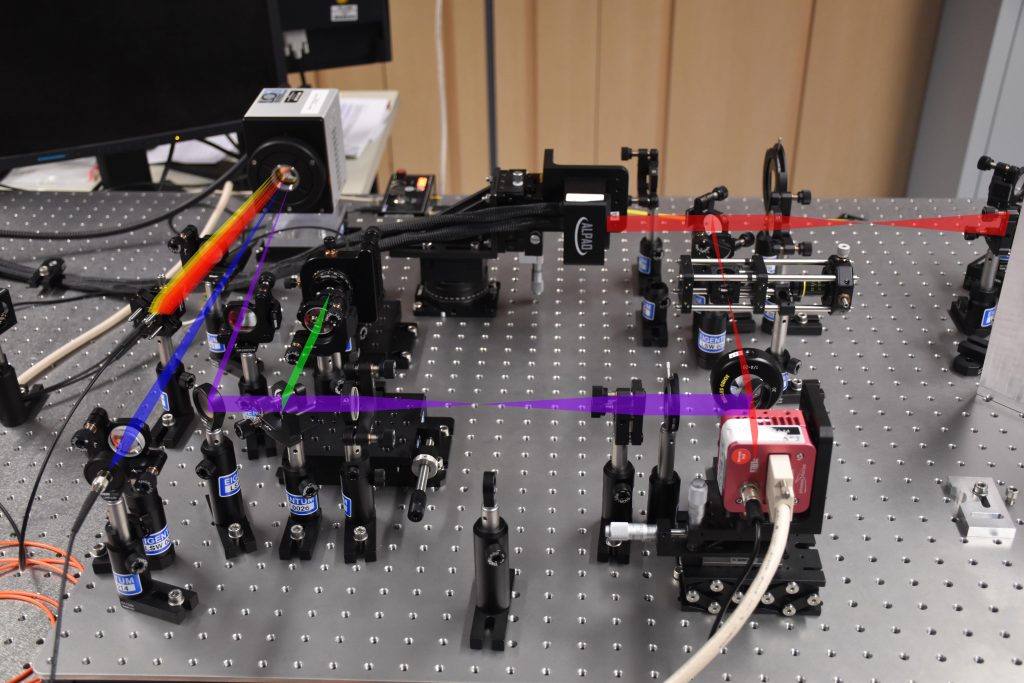The MLR-TT sensor
I have been leading the micro-lens ring, tip-tilt sensor (MLR-TT sensor) project. This concept has first been introduced by Dietrich & Harris, et al. 2017 (doi:10.1364/OE.25.018288) featuring a micro-lens array (MLA) on top of a single-mode, multi-code fiber and I subsequently optimized and implemented a modified version with a micro-lens ring coupling light into multi-mode fibers (MMFs) for sensing while coupling into a SMF for science observation.
For related publication, please see here.
Here follow some impressions…



Laboratory development

I have been involved in the Königstuhl Observatory Opto-mechatronics Laboratory (KOOL), which is run at Max-Planck-Institute for Astronomy (MPIA, PI Jörg-Uwe Pott) in Heidelberg, Germany. KOOL is a joint project of the MPIA, the Landessternwarte (University Heidelberg), and the Institute for System Dynamics (University Stuttgart).
KOOL is an adaptive optics (AO) testbed that allows both disturbing and correction of a telescope simulator’s pupil. I have added an infrared beam path and a fiber coupling arm for single-mode fiber measurements and system development.

Planet formation theory
In my master thesis I used a hydrodynamic Riemann solver (PLUTO v4.2, Mignone et al. 2007) to simulate warped protoplanetary disks and investigated the experienced numerical effects.
Simulated with PLUTO, visualized with Paraview. (M.Sc. Thesis: A Numerical Investigation of Warped Protoplanetary Disks at MPIA under supervision of Hubert Klahr; Hottinger, 2016)